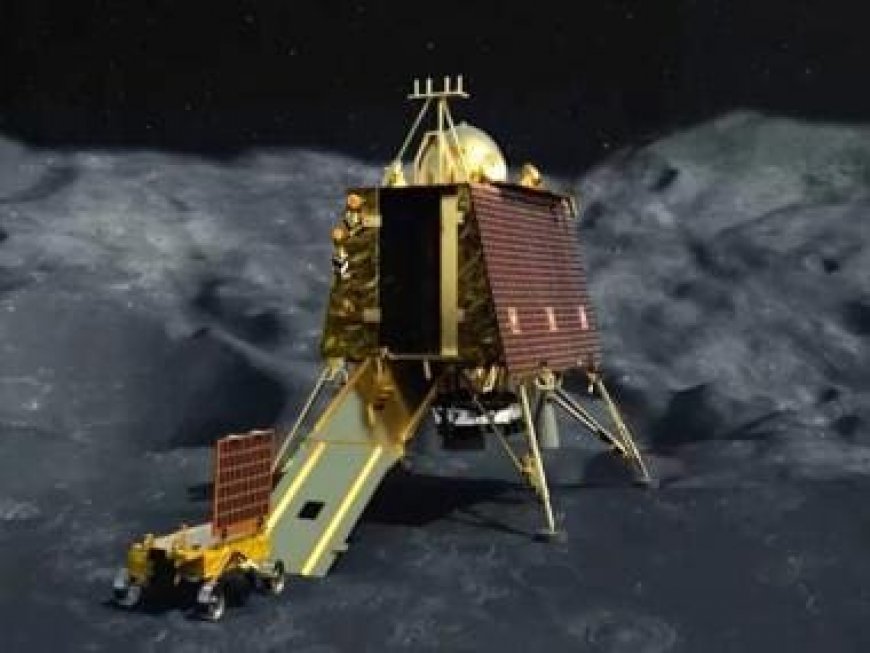Chandrayaan 3 to land today; Vikram Lander will be controlled by AI, ML not ISRO scientists
Chandrayaan 3 to land today; Vikram Lander will be controlled by AI, ML not ISRO scientists

ISRO has confirmed that they will be attempting to land the Chandrayaan 3’s Vikram Lander module at its PLS or Predesignated Landing Spot today.
ISRO tweeted that they are all set to initiate the Automatic Landing Sequence or ALS later today, at 5:44 PM IST, when the Vikram Lander Module, is propelled at the correct position.
Chandrayaan-3 Mission:
All set to initiate the Automatic Landing Sequence (ALS).
Awaiting the arrival of Lander Module (LM) at the designated point, around 17:44 Hrs. IST.Upon receiving the ALS command, the LM activates the throttleable engines for powered descent.
The… pic.twitter.com/x59DskcKUV— ISRO (@isro) August 23, 2023
ISRO will not be controlling the Vikram Lander Module once the ALS has been initiated. Instead, it will be controlled using preset algorithms, which will be then tweaked on the go by AI and ML algorithms, based on the input that it receives from the module’s sensor, and cameras.
Handing over the reins to AI
The Chandrayaan 3 is using a specially programmed system that will be in charge of the entire 15-minute landing process of Chandrayaan-3 as it descends. Powered by AI, this system covers everything from the lander’s computers to its guidance, control and navigation systems.
The ISTRAC centre located in Bengaluru will receive the signals transmitted by Chandrayaan 3’s lander. After gathering this data, it will then be relayed to multiple places: the Deep Space Network in Bengaluru, the Jet Propulsion Laboratory in the United States, and a station belonging to the European Space Agency in Spain.
An interesting thing to note is that once the clock hits 5:47 PM on Wednesday and the descent begins, the mission control centre won’t be able to control the lander. The actual touchdown is set for 6:04 PM.
Basically, the Chandrayaan-3 mission’s success or failure will come down to the capability of a pre-programmed AI algorithm.
Sensors will constantly feed AI
Scientists emphasize the pivotal role of sensors when it comes to operating a remotely controlled spacecraft. These sensors hold the key to crucial aspects like the craft’s location, speed, and orientation, forming the backbone of its functionality.
As the lander makes its way down from an altitude of 30 km above the moon’s surface to a height of 7.42 km during the initial 10 minutes of the 15-minute landing process, the sensors integrated into the lander kick into action, performing intricate calculations.
The heart of Chandrayaan 3 is really its sensors. When you’re dealing with a machine that’s operated from a distance, its entire operation hinges on its capacity to perceive where it is, how fast it’s moving, and in which direction it’s headed. Various types of sensors are utilized for this purpose. Velocimeters and altimeters are some examples; they furnish essential information about the lander’s speed and altitude, shared ISRO Chairman S Somnath.
To add to this, the craft boasts cameras including a hazard avoidance camera and cameras based on inertia. When these diverse sensors are amalgamated using a clever algorithm, they offer a clear insight into the lander’s precise position.
Furthermore, the brilliant minds at ISRO are also employing an AI system to oversee the navigation, guidance, and control of the lander. This system contributes to aligning the lander accurately, ensuring a safe and gentle landing.
Vikram to make a safe landing, even if sensors fail
S Somnath also pointed out that Chandrayaan-3 is crafted with a safety net. It is built to touch down securely even if all its sensors malfunction, as long as the propulsion system is functioning smoothly.
The design has been meticulously thought out. Even if two of the engines fail,, the lander’s got it covered. They’ve engineered it to handle various mishaps. “If things go as planned with the calculations, we’re looking at a nice and straight landing,” the head of ISRO had mentioned earlier.
When it comes to landing speeds, the Chandrayaan-3 lander can make contact with the lunar surface at a maximum velocity of 10.8 km per hour without putting the gadgets inside at risk. However, the sweet spot is more like 7.2 km per hour. The lander can even tilt up to 12 degrees and still stick the landing safely.
What's Your Reaction?

























































